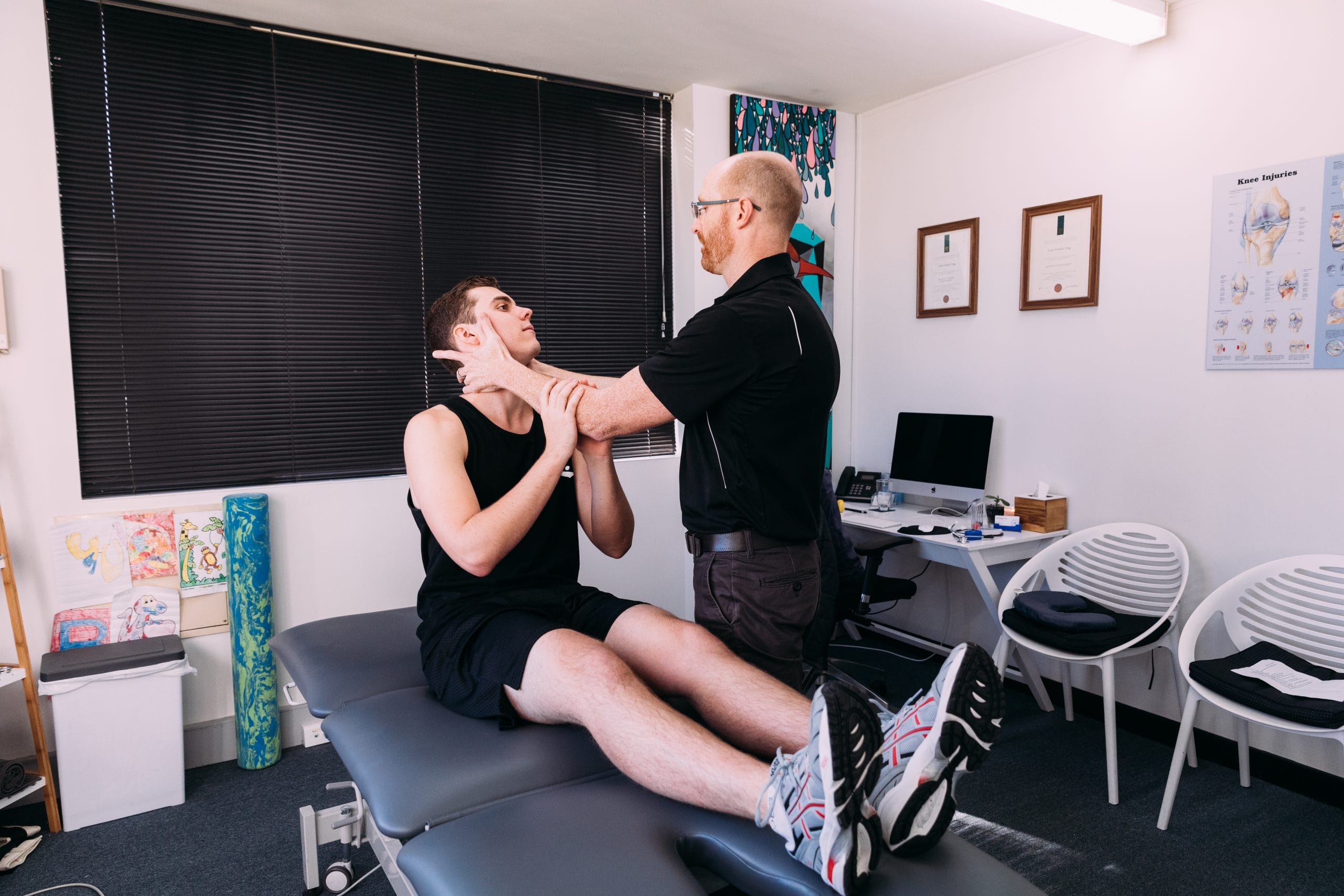
How many hours do you think you spend a day looking at your phone?
According to data, it averages out around 3 hours.
That’s roughly 76,500 hours over a lifetime.
We’ve done the math. That’s around 9 years of your life spent hunched over, looking at a small screen the size of your hand.
Before you throw yours out the window, let’s put this into perspective.
First up, not everyone’s looking at their phone the same amount. Different age groups behave differently around their phones. Studies done in Australia show that Gen Y office workers are clocking in around 10 hours of screen time per day, whereas older generations spend significantly less time glued to their screens. Alright, but what’s all this got to do with neck pain?
The Rise Of “Text Neck”
Neck pain from looking at phone screens is a growing problem among young people in particular, but older generations with pre-existing neck pain conditions are also in this risk group.
It’s well known that awkward or ‘bad’ postures mess with the spine, and upper back, causing crippling neck pain and other nasty symptoms that warrant a trip to the physio once in a while.
But the extent of this issue is only becoming fully known as we spend more time using the technology and the effects become more evident over time.
Here’s what we know for sure:
The human head weighs roughly 5kg.
The more we tilt our heads forward and look down at our screens the more gravitational force is applied to the neck. For every 15 degrees of tilt, the pressure doubles. If you’re looking at your phone in your lap with a bent neck of 60 degrees that’s equivalent to 27kg of force on your neck.

Overdoing It On Phone Use? Watch Out For These Symptoms
As more research is done, the evidence coming in points to an alarming trend. These days 30% of patients with neck pain will develop chronic symptoms. With ever-increasing times spent looking at phone screens, younger generations especially have a big challenge to fend off the worst symptoms.

Here’s what you should look out for:
- Pain or stiffness in the upper back and neck
- Headaches
- Reduced mobility
- Bad posture (forward head and rounded shoulders)
Ways Of Monitoring Your Phone Use
It’s hard to know where to start if you’re not sure of the facts. Monitoring phone-use is a great way to start changing habits. Here’s how you can start:
- If you’re an Apple customer, activate Screen Time usage on your iPhone, iPad, or iPod. This smart tool monitors your phone usage, gathering data on which apps you use most, and keeps track of how much time you’re spending online.
- If you’re a parent and you’re worried about your child’s screen time, there are a host of apps that allow you to monitor and even control screen time, either remotely or interactively.
- It’s often not the phone itself that’s addictive, it’s the addiction to platforms on it that keeps us hunched over for hours each day. Deleting some apps on your personal device can reduce time spent checking messages and updates.
- Setting strict time limits each day will help reduce screen time. Sticking to them can be hard, but the reward is noticeable.
Preventing “Text Neck”
While treating symptoms is necessary, nothing beats a successful prevention strategy. Preventing a sore neck from looking at phone screens can be done in several ways.
Here’s a few to get started:
- Examine how you look at your phone, specifically, where you hold it, and what angle your head sits at to text someone for example. Try holding your phone higher, so it’s more at eye level. This may look strange at first, but it greatly reduces the stress on your upper back and neck.
- Take breaks from your phone! Lock it away, activate silent mode or flight mode, basically whatever it takes you to disengage for a bit. Organise activities that don’t require phones, like sports, going to the beach, or hiking. Your neck will thank you.
- Keep active, exercise regularly, and stand up straight. If you’re sitting down and using your phone, the likelihood is you’re using it in your lap or accessing it from your pocket.
Get The Help You Need: Contact A Qualified Physiotherapist
The bottom line here is that keeping your back comfortably straight with your head up when scrolling or texting will save you real pain and discomfort down the track. Getting the help you need from a qualified physio for neck pain will be the best thing you can do for your neck. Evidence shows that physiotherapy can reduce symptoms, realign and adjust your posture, and relax and soften the neck muscles.
If you’re noticing pain and stiffness in your neck, don’t become the 30% of people who develop chronic pain. Get in early and find the root cause – contact our team at Integrity Physio today.




